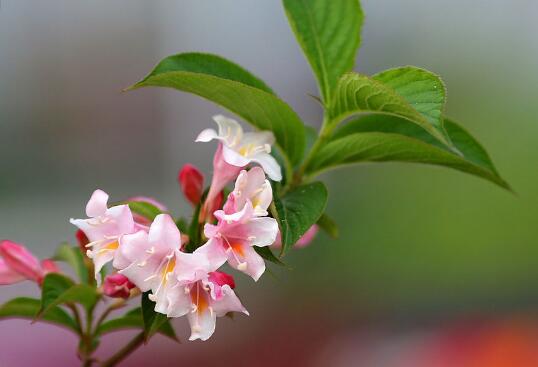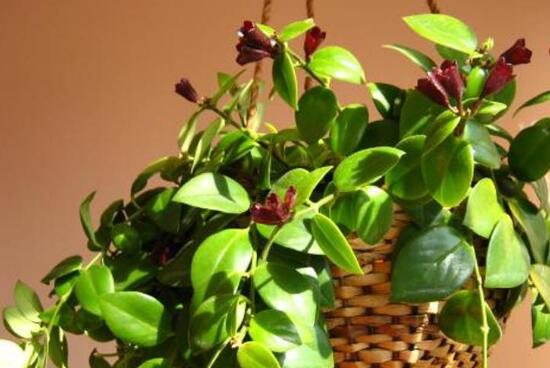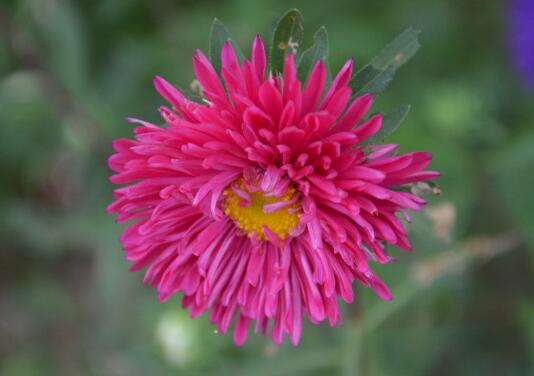How to reproduce the brocade flower, the propagation method of bonsai / sowing / cutting / striping
Brocade flower is a common flower in the world, it has a high ornamental, at the same time, there are many people who breed it in our country, with more people raising it, people are more concerned about its reproduction. So how does the brocade flower reproduce? What are the breeding methods of brocade bonsai? Next, the editor will take you to learn about it.
First, how to reproduce the brocade flower

Second, the propagation method of bonsai with brocade flowers.
Sowing and reproduction
1. Seed harvesting
The fruit of brocade flower usually matures at this time from September to October of each year, so we can harvest it. After harvest, we should dry the seeds in the sun, then crush them to remove impurities, and select the pure seeds. Its seeds are relatively light, usually only 0.3g for a thousand seeds.
two。 Seed initiation
Before we sow and propagate the brocade flower, we must first urge the seeds to be sent out. We can soak its seeds in warm water for 1-2 days, wait until the seeds begin to absorb and expand, take them out to dry, and then sow them.
3. Sowing method
Among the propagation methods of brocade bonsai, sowing and reproduction is a more common method. First of all, we can evenly sow the seeds on the soil surface, and then cover the seeds with 1-2cm soil for watering. When watering, we should pay attention to watering thoroughly, and then the seeds can germinate in about 20 days.
Cuttage propagation
1. Cuttings selection
Before we carry out cutting propagation, we should first choose cuttings (branches with brocade flowers). Generally speaking, it is best to choose branches with stronger growth, so that the survival rate of cuttings will be higher, and if we choose branches that look weaker, you can basically declare the cutting failure.
two。 Cutting method
Among the propagation methods of brocade bonsai, cutting propagation is a relatively simple one. First of all, we can use chopsticks to cut a hole in the soil, and then insert the cuttings, because the branches of brocade flowers are more easily damaged. If inserted directly, it is easy to hurt the roots. We can water the cuttings after we insert them, and it will take root about 60 days after watering.
Striping propagation
Striping propagation is generally carried out in the growing period of the brocade flower, we can press it into the soil, generally choose the lower branch pressure, so that the node is easy to take root and survive, after pressing the branch into it, we can use a protective film to fix it, and then normal maintenance for about 30-40 days can take root, after rooting, we will separate it from the mother plant.
Conclusion: after reading the above, I believe you all have a certain understanding of how to breed brocade flowers. After we have successfully propagated in accordance with the above methods, we can carry out follow-up conservation. If you do not know how to raise, you can refer to the breeding methods of brocade flowers, in which there is detailed teaching. Needless to say, this is the editor's introduction to the breeding method of brocade bonsai. I hope I can bring you some help.
Which flowers are suitable for breeding at the turn of autumn and winter, and which flowers and plants are suitable for reproduction in November?
November is the turn of autumn and winter, November 7, the Beginning of Winter, for the beginning of winter in China, the middle and lower reaches of the Yellow River are about to freeze; Lesser Snow, the Yellow River basin and the north began to snow on November 22nd, the Yangtze River basin also began to enter winter.
The maintenance of flowers and trees in November should pay attention to two aspects of work: one is to trim and clean the flowers and trees planted on the ground, the trunk is painted white and disinfested, the ground is turned over and applied base fertilizer, and the other is to do a good job in preventing cold and freezing from bonsai and flowers and plants in the greenhouse and greenhouse.
Flowers and plants suitable for reproduction in November
1. Sow and reproduce.
The flowers and plants that can be sown in the greenhouse are: Golden Lotus, Big Rock Tree, Begonia bulb, cyclamen, African Chrysanthemum, Gentleman, asparagus, Hosta and so on.
The flowers and trees that can be picked and sown are: hemp leaf hydrangea, lobular privet, privet, camphor, pencil cypress, bamboo cypress, Luohansong, no-trouble seed, rich seed (cinnabar root), palm, French holly, heather, cypress and so on.
At the turn of autumn and winter, which flowers and plants are suitable for reproduction in November
2. Cuttage propagation.
It is feasible to cut in the open field, but it must be covered with plastic film. the main types of flowers and trees for heat preservation and cold protection are: red leaf plum, plum blossom (green calyx, palace powder, etc.), rose (abundant rose, Elizabeth and other easy rooting varieties), pedicel begonia and so on.
The species of flowers and trees that can be propagated by root insertion are: red leaf plum, weeping begonia, sticking stem begonia, medlar bone, holly, Lingxiao, hammer elm, June snow and so on. Some of these root seedlings can be used to make small, miniature bonsai.
The flowers and trees that can be closely planted and propagated in the greenhouse or greenhouse are: melon seed and yellow poplar, sparrow tongue yellow poplar, big leaf yellow poplar, silver edge yellow poplar, cold water spray, Phnom Penh privet, gardenia, hypericum, golden plum, ten great efforts, Phnom Penh June snow and so on.
If properly managed, flowers and plants cut in November can grow intact roots next spring, which can be used to cultivate balls for green modeling. In winter, bamboo crabapple, borer leaf begonia, lotus leaf begonia, geranium, Fusang, hanging bell begonia, Yushu, purslane, red back cinnamon, golden bract, shrimp flower and so on can be cut and propagated in the greenhouse.
In the Yangtze River basin, ear strips such as hibiscus, Lingxiao and grape can also be cut for storage, and cutting in the next spring can obviously accelerate the rooting speed and improve the survival rate of cutting.
At the turn of autumn and winter, which flowers and plants are suitable for reproduction in November
3. Grafting propagation.
Red maple and feather maple were grafted with green maple seedling as rootstock, red maple and feather maple were grafted with apricot seedling and peach seedling as rootstock, plum blossom was cut (grafting interface was buried in soil for overwintering), sturdy branches of rose (Elizabeth variety) were used as rootstock, branches of excellent rose were used as scion, split grafting or cutting were carried out after cuttage, interface healing and lower incision rooting were synchronized, which could speed up the process of cultivating grafted seedlings of rose.
4. Striping propagation.
The main species of flowers and trees that can be propagated under low pressure in November are: Tripterygium, Gardenia jasminoides, gardenia, pomegranate, camellia, plum blossom, wax plum, Luohansong, brocade flower, sweet-scented osmanthus, eight immortal flowers, purple magnolia, emerald cypress, Michelia, hemp leaf hydrangea, snowball, Qionghua, spray snow and so on.
At the turn of autumn and winter, which flowers and plants are suitable for reproduction in November
5. Ramet propagation.
The woody ornamental plant species that can be propagated in November are: Begonia, hemp leaf hydrangea, snow spray, red Spiraea, three branches, hypericum, golden plum, ten meritorious works, drunken fish grass, peony, broom, welcome spring, golden bell, Jasmine, jasmine, Zhu orchid, Phoenix tail bamboo, Fei Baizhu and so on. In the south of the Yangtze River basin, the underground roots or tubers of Dahlia, canna and canna can be dug, stored in sand and then cut and planted in March of the following spring.
The plant species that can be propagated separately are: Bletilla striata, Jian Lan, Chunlan, Cymbidium, Hosta, Purple Calyx, Shegan, Iris, ornamental pineapple, Ophiopogon, auspicious grass, onion orchid, evergreen, one-leaf orchid, rooting and so on.
- Prev

How to propagate lipstick orchid? the propagation method / cutting survival rate of lipstick orchid is high.
As a beautiful girl in hanging orchids, lipstick hanging orchids are widely popular because its flowers are like lipstick and are kept at home by many flower friends. Lipstick orchid is very effective, as this point is known by more and more people, it is propagated in large numbers, then how to reproduce lipstick orchid? The following is the breeding method of lipstick orchid
- Next

How to sow green chrysanthemum, green chrysanthemum seed planting method/soil disinfection first
When it comes to the reproduction method of green chrysanthemum, it is generally based on sowing and reproduction. After countless experiments, the survival rate is still relatively high. How can green chrysanthemum be sown? What is the planting method of green chrysanthemum seeds? The following small series takes everyone to understand
Related
- Fuxing push coffee new agricultural production and marketing class: lack of small-scale processing plants
- Jujube rice field leisure farm deep ploughing Yilan for five years to create a space for organic food and play
- Nongyu Farm-A trial of organic papaya for brave women with advanced technology
- Four points for attention in the prevention and control of diseases and insect pests of edible fungi
- How to add nutrient solution to Edible Fungi
- Is there any good way to control edible fungus mites?
- Open Inoculation Technology of Edible Fungi
- Is there any clever way to use fertilizer for edible fungus in winter?
- What agents are used to kill the pathogens of edible fungi in the mushroom shed?
- Rapid drying of Edible Fungi

